Eero Pro 7 vs Eero Max 7: Amazon's Wi-Fi 7 networking, compared
Amazon's Eero routers offer mesh networking at a reasonable price, giving modern iPhone owners Wi-Fi 7 speed -- and there are two higher-end options. Here's how the prosumer-grade Eero Pro 7 and Eero Max 7 compare on paper.
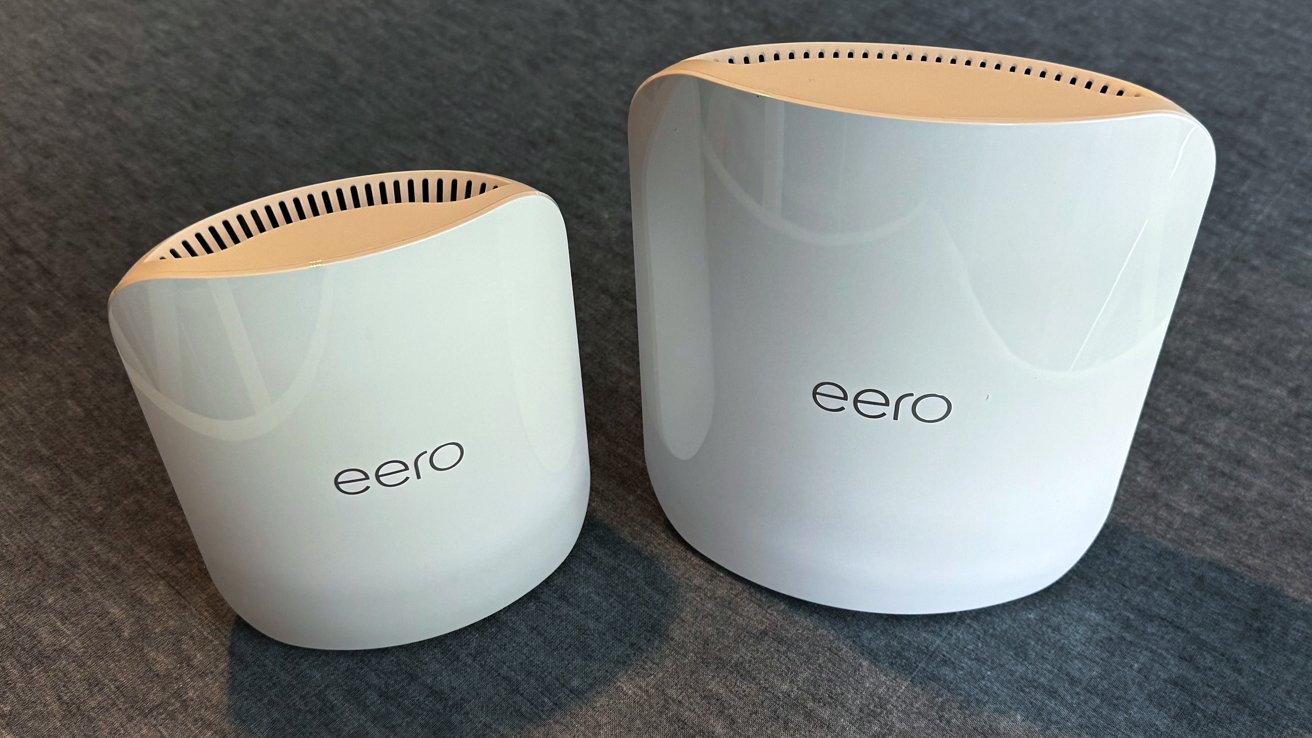
Eero Pro 7 versus Eero Max 7 [right]
As the march of technology advancement continues at pace, it's fair to say that most people's home networks aren't great. With the increased use of mesh networks and newer Wi-Fi standards, the networks are getting faster with better coverage.
However, while people may be used to periodically replacing their iPhone or iPad with newer models, making changes to the home wireless network is a much rarer occasion. Many people seem happy to use whatever their internet provider installs, and barely has a need to replace their hardware otherwise.
Given that consumer-grade networking is getting faster and higher capacity than ever before with the introduction of Wi-Fi 7, there's never been a better time to make the upgrade. With growing appetite for bandwidth, there's also never been more of a pressing need, especially for families.
Amazon is well placed to take advantage of anyone upgrading their home network. Its Eero brand tempts consumers with fast speeds, the coverage benefits of mesh Wi-Fi, and fairly decent pricing for a wireless system.
As part of a long-term evaluation of Amazon's Wi-Fi service during the age of Wi-Fi 7, AppleInsider will be putting the Eero Pro 7 and Eero Max 7 through their paces in full reviews soon.
For the moment, an initial check over the hardware reveals there's quite a bit of a difference between the two tiers of network hardware. Here's how they compare.
Eero Pro 7 vs Eero Max 7 - Specifications
| Specifications | Eero Pro 7 | Eero Max 7 |
|---|---|---|
| Price | $299.99 (Single), $699.99 (Triple) | $479.99 (Single), $1,359 (Triple) |
| Dimensions (Inches) | 5.77 x 7.10 x 3.10 | 7.24 x 8.73 x 3.54 |
| Wi-Fi | Wi-Fi 7 (802.11be) | Wi-Fi 7 (802.11be) |
| Bands | Tri-band (2.4, 5, 6GHz) | Tri-band (2.4, 5, 6GHz) |
| Speed Rating | BE10800 | BE20800 |
| Ports | 2x 5Gb Ethernet, 1x USB-C (Power) | 2x 10Gb Ethernet, 2x 2.5Gb Ethernet, 1x USB-C (Power) |
| Processor | Quad-core Cortex A53 | Quad-core Cortex A73 |
| Memory | 1GB | 2GB |
| Storage | 4GB | 4GB |
| Coverage (Single unit, sq. ft.) | 2,000 | 2,500 |
| Smart Home | Zigbee Smart Home Hub, Bluetooth LE 5.0, Works with Alexa, Thread, Matter (Controller Only), Amazon Connected Home | Zigbee Smart Home Hub, Bluetooth LE 5.0, Works with Alexa, Thread, Matter (Controller Only), Amazon Connected Home |
Eero Pro 7 vs Eero Max 7 - Physical design
Both the Eero Pro 7 and Max 7 are designed as countertop routers, in that they are made to sit on top of a surface rather than attaching them to a wall. This does limit where you can position the units in the home, as you have to put them on a shelf or a table.
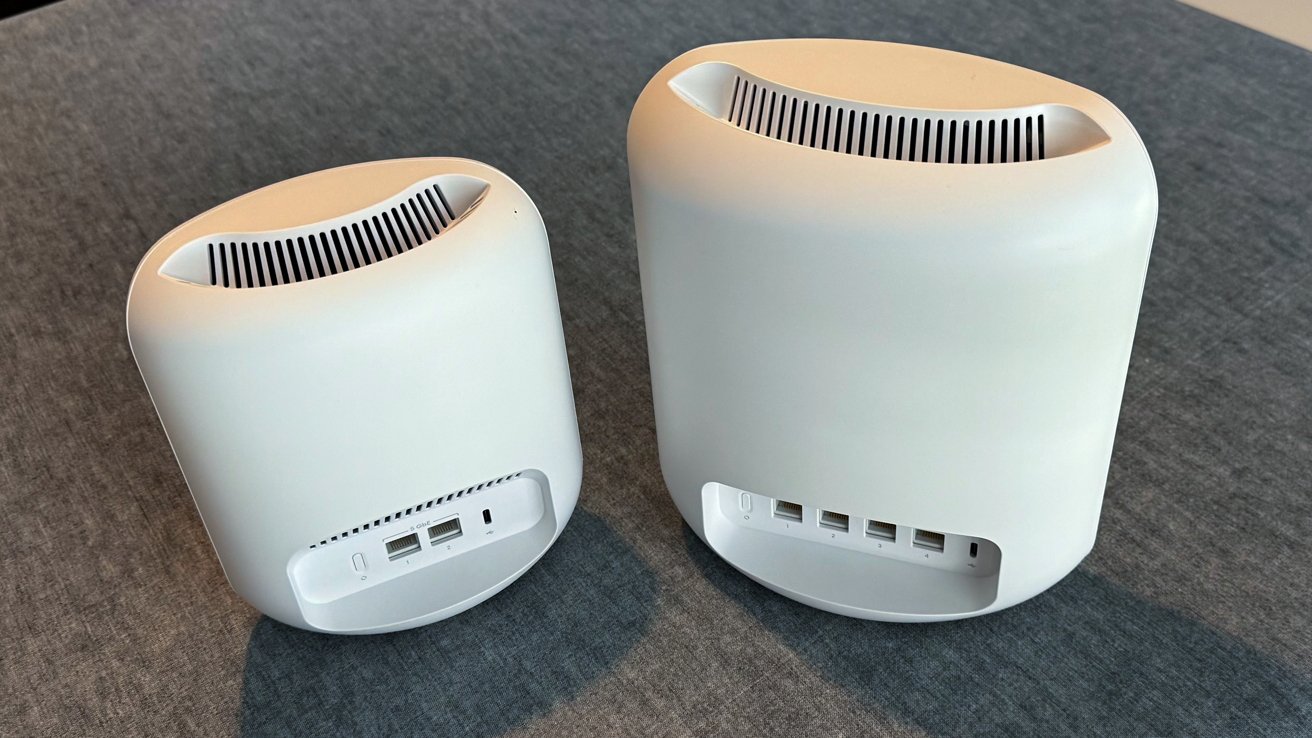
Eero Pro 7 versus Eero Max 7: The rear view of both units
When it comes to size, the Max 7 is the larger unit, at 7.24 by 8.73 and 3.54 inches thick. The Pro 7 is a fair bit smaller at 5.77 inches by 7.1 inches, and 3.1 inches thick.
In both cases, they are reasonably thin enough to have the same sort of footprint on a desk as a thick book or catalog that's standing on end.
The design of both involves a curved side bearing the Eero logo, intended to be outward-facing. The other side, considered the back, has all of the ports placed into a small alcove towards the base, complete with vents and a power button.
Eero Pro 7 vs Eero Max 7 - Wireless connectivity
Both the Pro 7 and Max 7 are Wi-Fi 7 devices, with support for standards stretching from 802.11a all the way to the latest 802.11be. That's a very wide compatibility range, and practically anything will connect to the units, so long as they are configured to work with them.
Both are also tri-band, with support for 2.4GHz, 5GHz, and 6GHz bands. However, this is where we start to see differences.
The Pro 7 operates under a 2x2 configuration, with two antennas transmitting and two receiving across all bands. However, the Max 7 operates with a 2x2 configuration for 2.4GHz, rising to 4x4 for the 5GHz and 6GHz bands.
That translates to six spatial streams for the Pro 7, and 10 streams for the Max 7. Channel width is also similar across the board, ranging from 20MHz to 320MHz in both models.
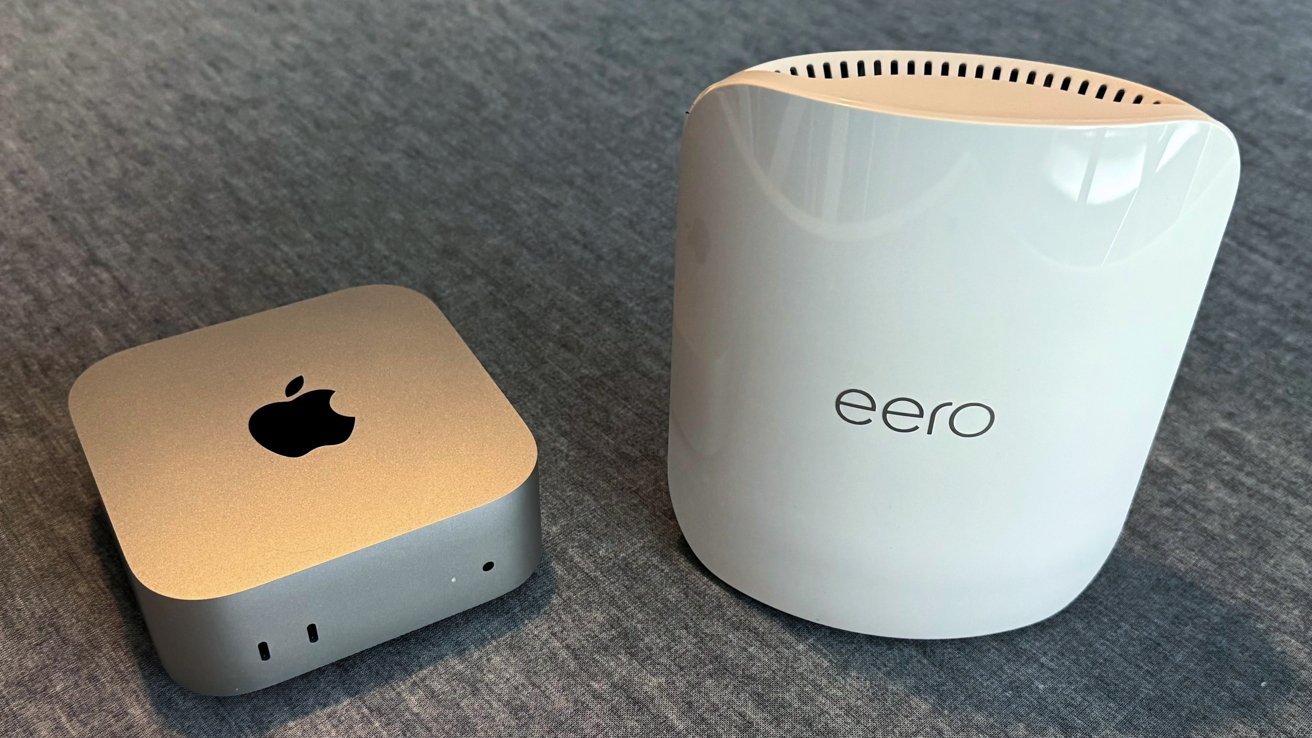
Eero Pro 7 versus Eero Max 7: Pro 7 with M4 Mac mini for scale
The difference means a lot, as the Max is capable of handling more streams simultaneously, and therefore more bandwidth. Eero says that the Max 7 can go up to 4.3Gbps for wireless connectivity, higher than the 3.9Gbps of the Pro 7.
The speed rating, the theoretical maximum across all bands, is said by Eero to be BE10800 for the Pro 7, BE20800 for the Max 7.
Both of these are theoretical, in the sense that they require perfect conditions with no interference, and using capable hardware. In this instance, take it to mean that the Max 7 will be able to offer faster transfer speeds in general than the Pro 7.
Then there's the coverage to factor in, with the Pro 7 claimed to cover a 2,000-square-foot area with one unit, or 2,500 square feet for the Max 7.
Again, these are theoretical at best, and things like walls, doors, windows, furnishings, plants, and human bodies will affect signal strength permeating through a home. The Max 7 will offer better coverage, generally, than the Pro 7.
Also helping network performance is the processing hardware. The Pro 7 has a Cortex A53 ARM chip, supported by 1GB of memory and 4GB of storage.
The Max 7, living up to its name, has a quad-core Cortex A73, with 2GB of memory and 4GB of storage.
Eero Pro 7 vs Eero Max 7 - Meshing
All the details above are based on a single unit of each being used for networking purposes. If you have a larger house or live somewhere where the walls interfere too much for normal Wi-Fi access points, Mesh comes into play.
Mesh networking relies on using two or more units, spread across the home. Kept within range of each other, the mesh network creates one seamless network across the units, with data being transferred between each point on its way to the internet.
The network uses radio bands to connect between the access points, and typically, this can be restricted to specific bands at the point of setup.
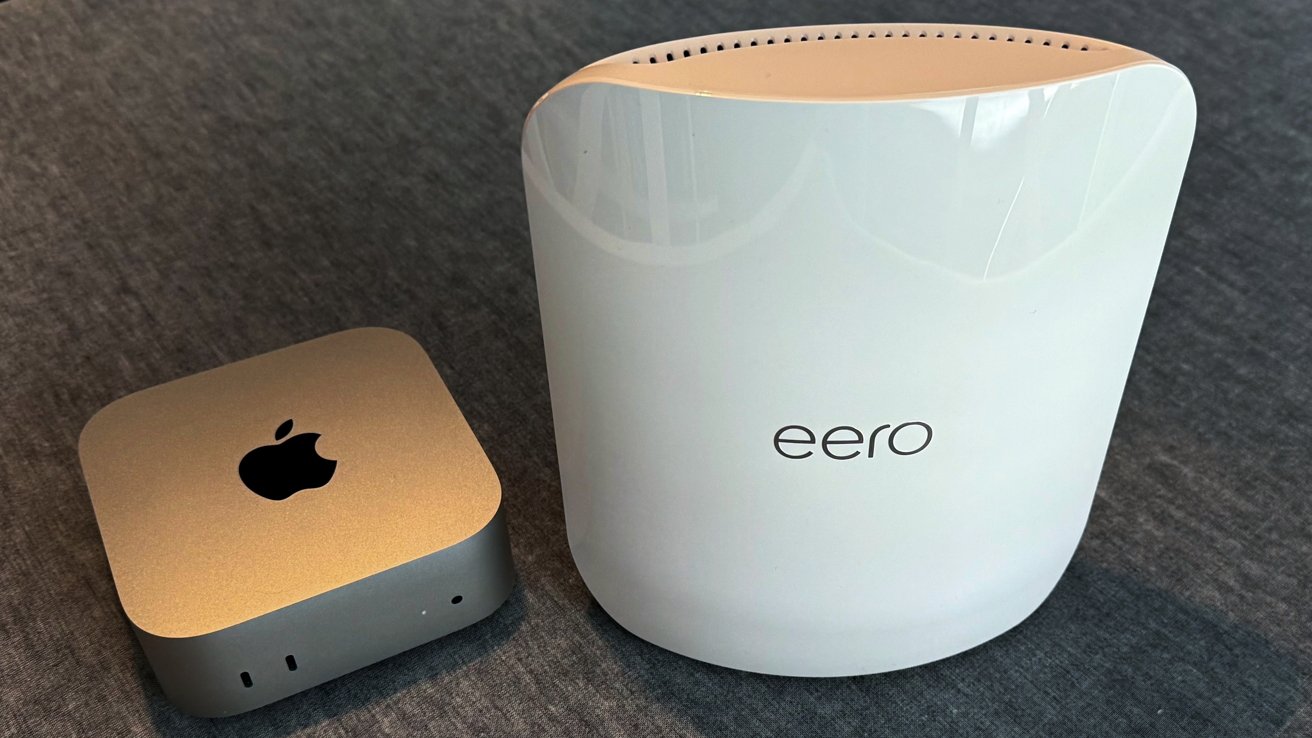
Eero Pro 7 versus Eero Max 7: The Max 7, with M4 Mac mini for scale
In the case of Eero, it uses a system called TrueMesh to detect the ideal path between multiple points, automatically picking the best backhaul bands to ferry data. Rather than using one dedicated band for all network traffic between access points, it can select unused bands to do the job to maximize throughput.
What that means is that both will handle mesh networking the same way, but with different levels of performance. With more bands and bandwidth available, the Max 7 will do better than the Pro 7.
The Max will also do theoretically better when it comes to expanding the coverage area. Three Max 7 units working together can cover up to 7,500 square meters, claims Eero, with the Pro 7 going up to 6,000 square feet.
This is a simple multiplication on Eero's part based on the reach of each unit, but it doesn't take into account if the units have to communicate with each other wirelessly.
However, the coverage areas for the mesh network does stay true if the points are also on a wired network, which eliminates the need for wireless backhaul.
Eero Pro 7 vs Eero Max 7 - Physical connectivity
The back of each access point has a selection of Ethernet ports, which are used to connect to the existing wired network. They are also used to provide connectivity to wired devices in cases where there is no physical connection to the rest of the network, and the mesh network has to act as a bridge.
The Pro 7 has a pair of autosensing 5-gigabit Ethernet ports, which will work with devices running at slower speeds.
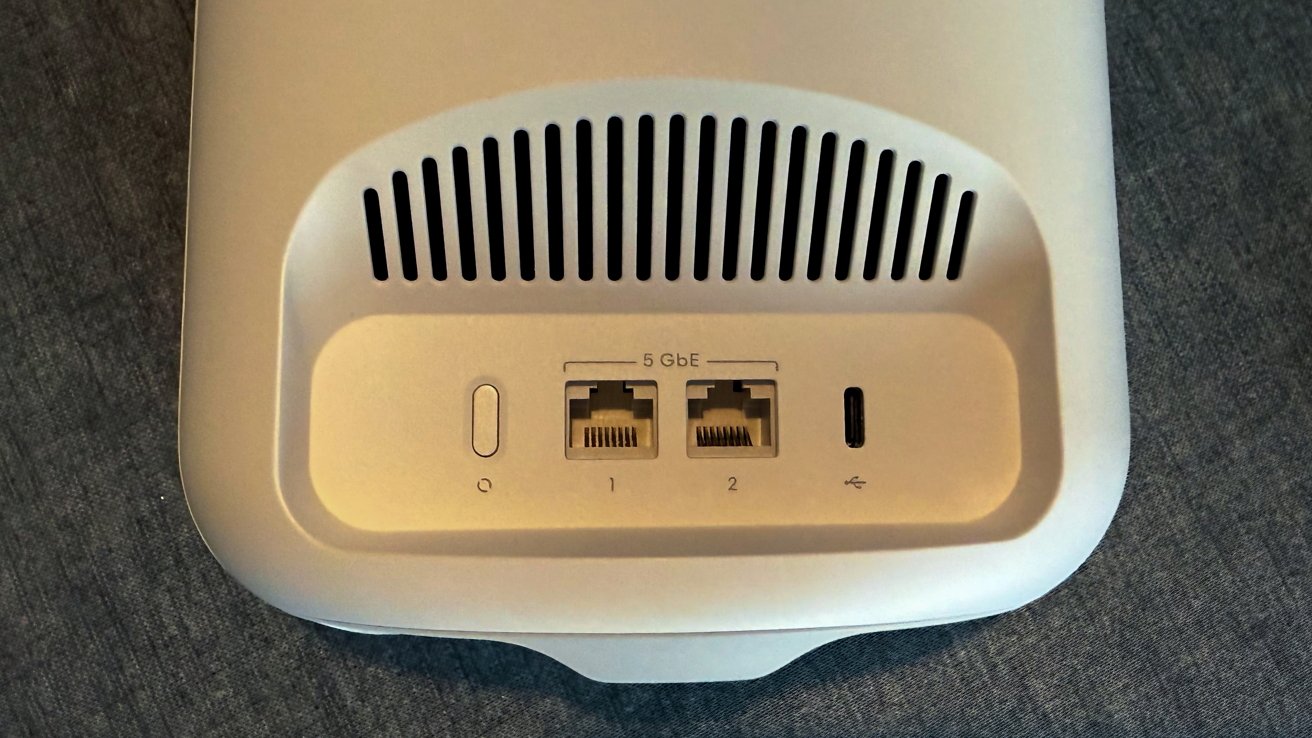
Eero Pro 7 versus Eero Max 7: The two 5Gbps Ethernet ports of the Pro 7
However, the Max 7 has four Ethernet ports in total. A pair of 2.5-gigabit Ethernet ports is joined by a pair of 10 Gigabit ports.
Enterprise users are likely to benefit most from the Max 7's port selection, simply because 10-gigabit networking is still quite expensive to set up. Even the 5-gigabit connections on the Pro 7 are probably higher than what most consumers would need.
Even so, having headroom for future networking upgrades is always nice to have on standby.
Both units also have a USB-C port on the rear, however this is used for charging.
Eero Pro 7 vs Eero Max 7 - Network management and smart home
Like other networking appliances, you can connect to each using a browser over the network itself to configure its settings. However, it has become the norm that networks can be managed by an app.
Eero does have an app to manage the network and to guide users through the initial setup. Available for iOS, the app advises of your connection speed, device usage, parental controls, and options to share the network with guests.
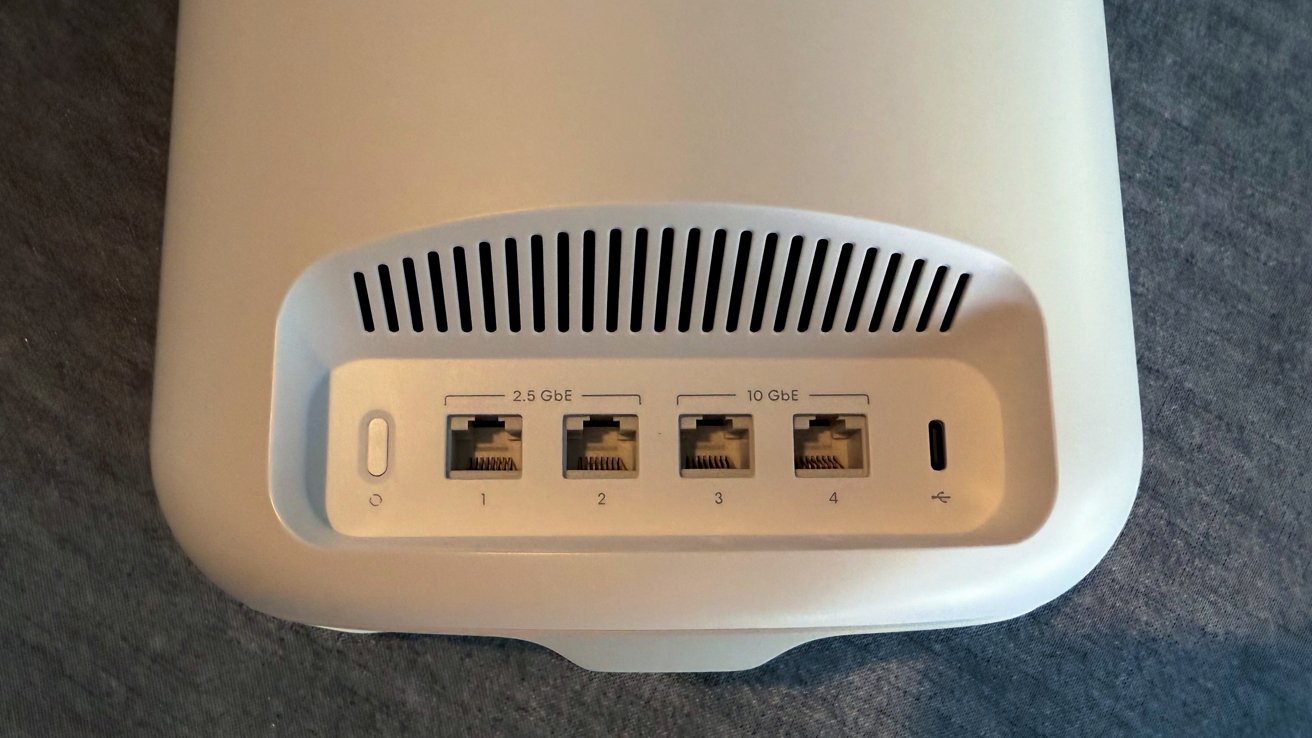
Eero Pro 7 versus Eero Max 7: The Max 7 has two 2.5Gbps and two 10Gig Ethernet ports
Eero has included identical smart home support across both unit ranges. That includes Zigbee Smart Home Hub, the ability to act as a Matter controller, and connecting to devices over Thread and Bluetooth LE 5.0.
Since it's an Amazon brand, there's support for Works with Alexa and Amazon Connected Home. With HomeKit supporting Matter, the access points should be fine with Apple's smart home platform.
Eero Pro 7 vs Eero Max 7 - Pricing
Amazon stocks the Eero Pro 7 and Max 7 in multiple packs, from one access point to three. The Pro 7 is priced at $299.99 for a single unit, a two-pack is $549.99, and a trio can be bought for $699.99.
The Max 7 starts from $599 for one unit, with two costing $1149.99, and three for $1699.99.
We wrote this over the weekend in preparation for the full reviews, and the Pro 7 and Max 7 were on sale for a day of it. If you're considering a buy, the discounts are steep and frequent, so it may be worth watching.
Eero Pro 7 vs Eero Max 7 - Prosumer and professional
You can distill the Eero Pro 7 and Eero Max 7 into two fairly broad categories of use cases. This is pretty down to how much actual networking capacity you need.
The Pro 7 is the better buy for consumers in general. There is little fear of the average user pining for 10-gig wired networking, unless they're willing to spend a lot for other hardware that uses it, making the Max 7 seem like an extravagance.
The Max 7 is the performance option, not only in wired speed but in wireless. Of the two, it will have the more durable mesh network, and is very much the option if bandwidth is a massive priority.
The sheer expense of the Max 7 means it is less useful for consumer mesh networking than the Pro 7. Sure, each Pro 7 unit has a slightly smaller range than the Max 7, but the price difference is considerable enough that you could get one more Pro 7 unit in the mesh network without breaking the bank.
For most people, the Eero Pro 7 is more than enough for their home bandwidth needs. It will offer enough future-proofing for a few years of wireless connectivity at least, but without the nosebleed pricing of the Max 7.
Eero Pro 7 vs Eero Max 7 - Where to buy
You can get Wi-Fi 7 from Amazon for as low as $170 with the Eero 7. We didn't look at that one here, though, and we think that most AppleInsider owners should be looking at the Pro or Max models. The $120 per node going up to Max is worth the extra money.
The Eero Pro 7 is available in multiple packs, starting from $299.99 at Amazon.
The Eero Max 7 is the best kind of overkill, but as we've discussed, there's a lot included, and it has a hefty price. It is also available in different pack sizes, starting from $599.99 on Amazon.
Full reviews are coming soon. In those reviews, we'll be delving into wired speeds, versus wireless backhaul, and running 2.4 GHz-only equipment.
Read on AppleInsider

Comments
So far, we've found with the 7 Max that unit to unit, it outpaces our gigabit backhaul to the entertainment center, and not by a little.
The last time we got a denial about a router being discontinued, it was a month before they killed off the AirPort. Which I adored, by the way.
Obviously, I get that judging wireless performance is going to be difficult to compare since everyone's wireless ecosystem is entirely different, including interference and other issues, but if any trends develop that clearly set the two systems apart in that regard, that would be great to hear about. Thanks again!
Having said that, when I describe it as niche at the moment, even those high end Mac’s that you mentioned don’t support WiFi-7, so it really is a niche within a niche right now.
Future proofing is always a good thing and if someone were in the market, as I very recently was, I’d certainly take a look at the WiFi-7 options you outline.
Having said that, I found that I could get superior WiFi-6E equipment at a lower price because of the newer standard.